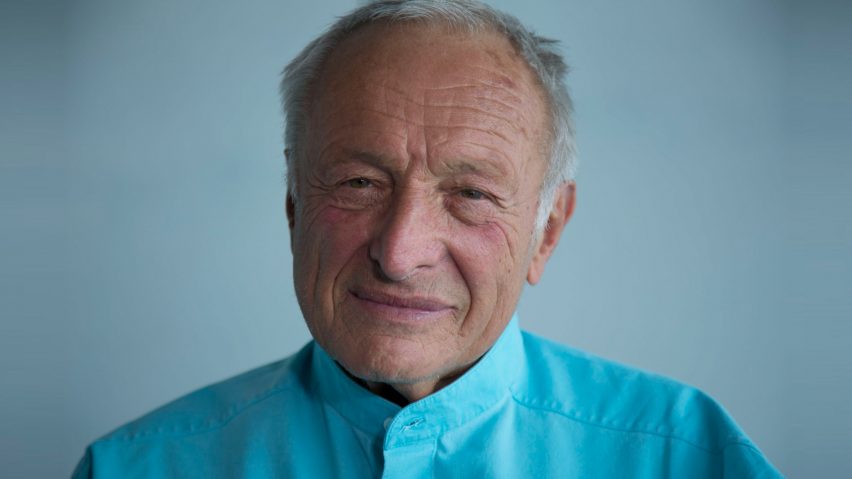High-tech architecture pioneer Richard Rogers, who designed the Centre Pompidou and Lloyd's building, has passed away aged 88.
British-Italian architect Rogers, one of the world's best-known architects, died at his home in London on Saturday evening. His death was confirmed to the New York Times by his son Roo Rogers and in a statement on the website of studio Rogers Stirk Harbour + Partners, of which Rogers was a founding partner.
Over his career, he was awarded all of architecture's top honours. He was awarded the Pritzker Architecture Prize – architecture's highest accolade – in 2007, the Royal Gold Medal in 1985, the American Institute of Architect's Gold Medal in 2019 and the Praemium Imperiale for Architecture in 2000.
His studio won the Stirling Prize – the UK's top honour for a building – twice, first for Madrid's Barajas Airport in 2006 and later for the Maggie's Centre in London in 2009.
Born in Florence, Rogers returned to the UK for school before attending the Architectural Association and then moving to the US to study at Yale, where he met Norman Foster.
On returning to the UK, he set up architecture studio Team 4 with Foster, Su Brumwell and Wendy Cheeseman. Although the studio only completed a couple of projects, it established the basis of high-tech architecture.
In 1967, following the split of Team 4, Rogers established Richard + Su Rogers Architects with Brumwell, who he had married. One of the studio's most significant projects was a bright yellow home designed for Rogers' parents.
Three years later, Rogers teamed up with Italian architect Renzo Piano to establish Rogers + Piano. The relatively unknown duo soon won the extremely high-profile competition to design the Centre Pompidou in Paris, which would become one of the century's most significant buildings.
Centre Pompidou completed in 1977 when Rogers established Richard Rogers Partnership, which was renamed Rogers Stirk Harbour + Partners in 2007.
"He will be remembered as a colleague and friend who was gregarious, always completely free of status, always inclusive, always exploring and looking ahead," Rogers Stirk Harbour + Partners said in a statement.
"A man of immense drive and charisma, he was equally a man of civility and integrity, dedicated to the art and science of architecture, of urbanism, the life of the city, of political commitment and positive social change," the studio added.
"His love of people, of discussion, the sharing of views, of exploring new paths and of co-operative and creative working, was reflected in the practice he founded, and which continues to espouse and develop those ideals today."
Rogers completed a series of high-tech buildings, including Lloyd's building in London, one of the 1980s most recognisable buildings.
Other significant projects completed by the studio include the Millenium Dome, Senedd building, Heathrow's Terminal 5, One Hyde Park, NEO Bankside, The Leadenhall Building, 3 World Trade Centre in New York and International Towers Sydney.
Last year, Rogers stepped down as chairman of Rogers Stirk Harbour + Partners.
"Richard has been a huge inspiration to us all at Rogers Stirk Harbour + Partners, and to the architectural profession globally," said practice co-founder and former Dezeen Awards judge Ivan Harbour at the time.
"His humanity, integrity and generosity are reflected in the practice he founded, and which continues to be guided by his principles."
His final project – a gallery at the Château La Coste vineyard in southern France that cantilevers out above the hillside – was revealed earlier this year.

